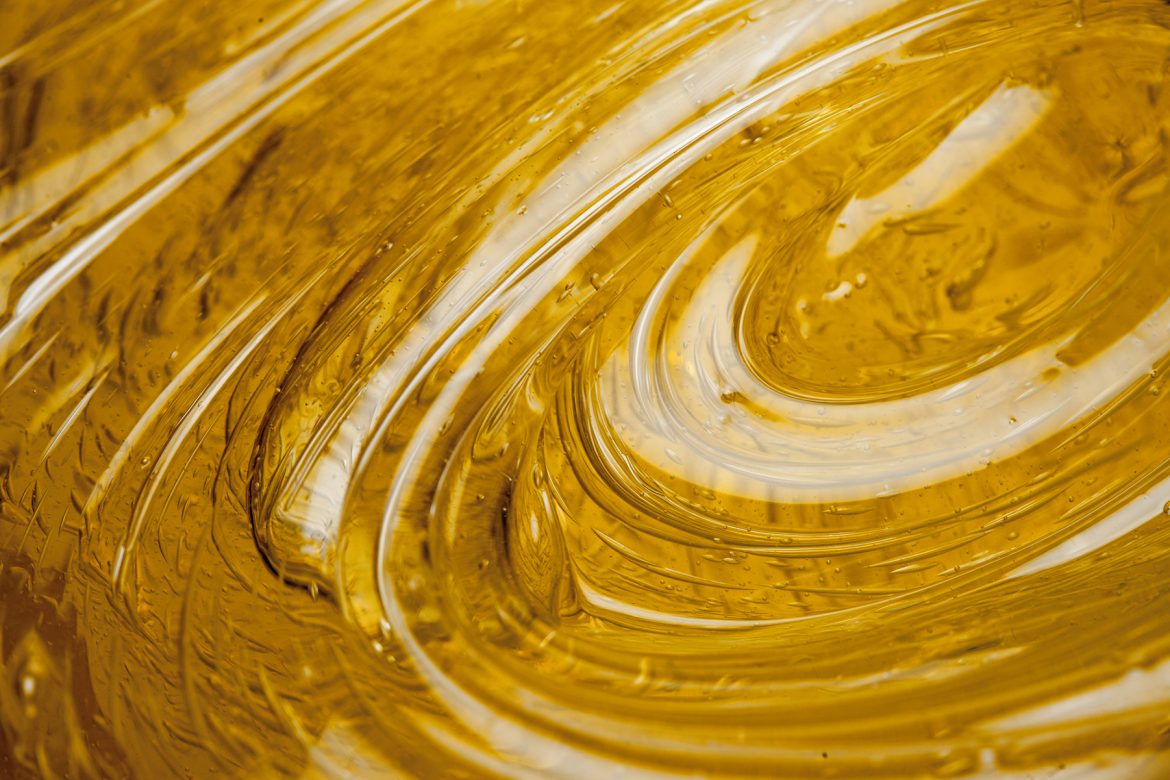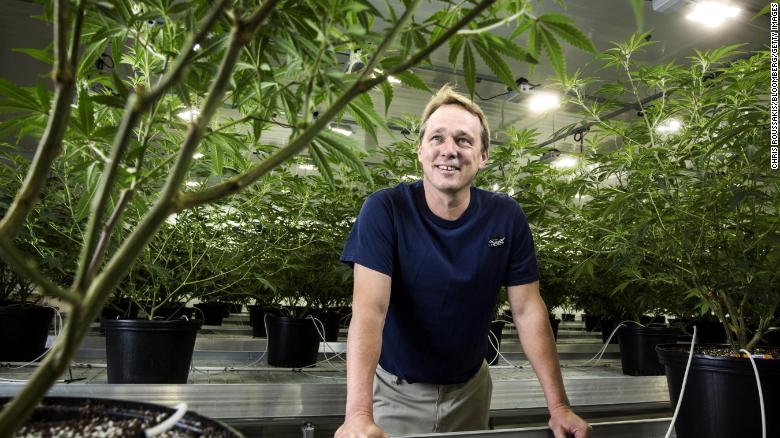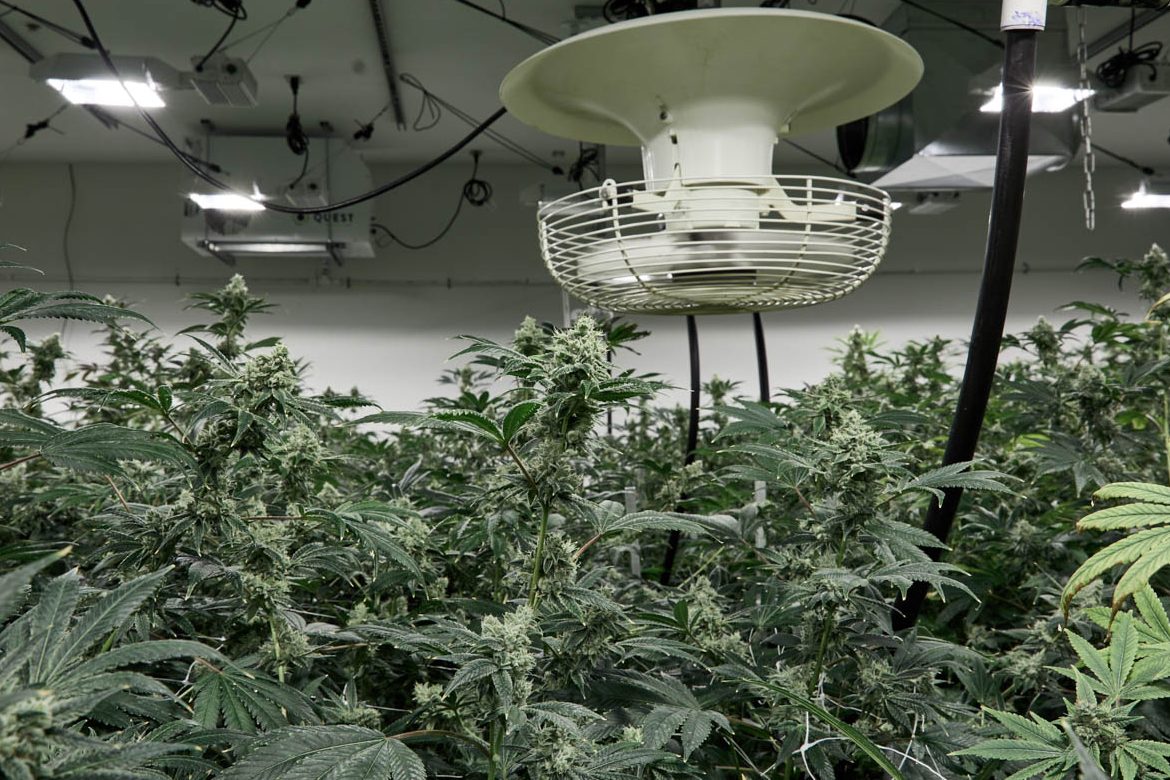Stoners, weed snobs, and concentrate connoisseurs, lend us your rigs.
To honor all things dabbable, Weedmaps News compiled a list of some amazing concentrate makers in the U.S. today. It includes craft brands, some founders, ground-layers and “original” companies in legal markets, big-name dab makers, small-batch processors, and everything in between. As the industry grows, more talent crops up, so know that quality extractors extend beyond this list.
We see you, dabbers. So here’s a tip of the hat to some of the coolest companies crafting our golden wax, rosin, and concentrates in all shapes and sizes. From the entry-level to the rare expert, the list includes both supreme top-shelf and affordable but still high-quality companies for consumers to enter through.
Here are 18 ooey, gooey concentrate companies killin’ the game you need to know about.
Raw Garden
Why It Made The List: Get lost in the live resin sauce. Raw Garden is a popular California concentrate maker known for its refined live resin diamonds and live resin sauces. Raw Garden tends to fly off dispensary shelves thanks to its affordable price, landing anywhere from $40 to $60 per gram. This is the tastiest bang for your buck, and it keeps winning awards to boot.
Who It’s For: The avid dabber who will not sacrifice quality and flavor for a low price
Where to Find It: California
Bloom
Why It Made The List: Bloom is a wildly popular concentrate brand founded in 2013 in Los Angeles. Today, its concentrates can be found inside of Dart pods, distillate vape pods, and easy-to-use syringes for distillate. Its quality can only be matched by its tried-and-true genetics worth trying Bloom’s take on, including King Louis the XIII, Green Crack, Pineapple Express, and Maui Wowie.
Who It’s For: The consumer who wants clean, easy, delicious distillate
Where to Find It: California, Nevada, Washington, and New Mexico
Moxie
Why It Made The List: Since 2015, Moxie has been an award-winning staple in the concentrate game with plenty of clout. Its cartridges and Dart pods will sell new consumers on the gospel of concentrates. The wax found inside will be Moxie-level quality. Genetics you’ll dab with this brand? Snoop’s Dream, Alpine Cookies, Blue Coral, Goji Valley Kush, Lemon Goji OG, and Viper City, to name a few.
Who It’s For: The dabber who loves convenience and new tech
Where to Find It: California, Nevada, Michigan, Pennsylvania
Viola
Why It Made The List: Viola was founded by former NBA player Al Harrington. Since Viola’s inception, the concentrate brand has made waves in both Colorado and Oregon with its trail-blazing diamonds and live sugars, innovating today with THCA sauces, and serving up massive jars called Honey Pots. Delicious dabs include Screaming Afgoo, Chem D Krush + Chem D x I95, and Orange 43.
Who It’s For: The honey-bear consumer who wants a “Honey Pot” (7 gram jar) of concentrate, so it will last a long time
Where to Find It: Colorado, Oregon, California, and Michigan
Green Dot Labs
Why It Made The List: Green Dot Labs is at the top of its game in the Colorado market, absolutely crushing concentrate products including live resins, badders, and rosins worth drooling over. The company innovates in its hydrocarbon extraction process as well as collabs with artists, including a recent collaboration with the Disco Biscuits for the summer. If you see Green Dot Labs’ Black Label, know that it will be as glorious as music in your ears.
Who It’s For: The responsible but heady, jam-banding dabber
Where to Find It: Colorado
Natty Rems
Why It Made The List: Natural Remedies, which evolved to Natty Rems over the course of the last ten years in the Denver market, produces some killer concentrates. Founded as one of the Mile High City’s first medical dispensaries in 2009, the company grew to include Concentrate Remedies in 2015, when it began producing cured budder, live budder, live diamonds, live sugar, shatter, and fresh frozen solventless concentrates.
Who It’s For: Dabbers who want the heady, natty remedy without breaking the bank
Where to Find It: Colorado
The Clear
Why It Made The List: In the case of this Colorado company, the name really does say it all. The Clear produces some super-clean concentrates, almost opaquely white diamonds, with product line offerings, such as a new 1:1 Lobster Butter, Banana Cream, and its Honey Buckets of pure distillate.
Dubbed by the company as “Sunshine in a Bottle,” you can find The Clear on shelves in dispensaries in five legal markets across the U.S. Founded by a group of chemists, The Clear said on its website that it produces its flavors and terpenes in-house, “using only organic and kosher components.”
Who It’s For: The dabber who is obsessed with crystal, bling, and sparkly things
Where to Find It: California, Colorado, Washington, Oregon, and Michigan
Willamette Valley Alchemy
Why It Made The List: If you live in Oregon, give concentrates from Willamette Valley Alchemy a shot. Founded in 2015, the company uses genetics from equally sought Oregon producers and collabs including Doghouse and Yerba Buena, to name a few. The alchemists create shatter, live resin, and diamonds made from freshly frozen cannabis flower, potency ranging anywhere from 65% to 95%, while prices will range but hit in the $42-to-$72-per-gram range.
Who It’s For: The mad scientist dabbler
Where to Find It: Oregon
710 Labs
Why It Made The List: The710 Labs’ motto? “OGs make better OG.” Which its founder Brad Melshenker said means the “constant struggle to now one up ourselves.” This California concentrate company has been praised in both the Cali and Colorado markets for making some out-of-this-world concentrates in the form of sauce, live resin sugar, sauce, and live badder. Using unique genetics in its living soil cultivation — including Lemon Tart Pucker, Z Cubed, Black Mamba, and Kaya’s Koffee F2 — 710 Labs has the clout to match its price point. Often partnering with artists including This Is Addictive, Giacomo Bagnara, Katz and Dogg, to name a few, 710 Labs is as artisan as it gets.
Who It’s For: The dab head with extra cash or who wants to savor the gram. If you’re saving money, it’s the birthday splurge.
Where to Find It: California and Colorado
West Coast Cure
Why It Made The List: West Coast Cure is responsible for creating some of the prettiest wax extracts we’ve ever seen. Its most popular strain extracted under its BHOMB product line, Hardcore OG, propelled West Coast Cure to stoner notoriety, as rapper Action Bronson vouched for its Hardcore OG cake badder. Founded in Newport Beach, California, in 2010, West Coast Cure was born to cater to a high-end consumer of cannabis extracts, including shatters, budder, and cartridges.
Who It’s For: The weed snob who started dabbing for the terpene and flavor profile
Where to Find It: California
AllGreens Extraction Co.
Why It Made The List: If you follow cannabis brands, influencers, or hashtags on Instagram, you’ve probably seen some IG posts of AllGreens distillate. Case in point: Unicorn Tears is the name for its distillate with a beautiful, vivid purple hue. The company excels in its rare offerings that include Papayahuasca or Chem de la Chem grown by Limonene Farms, to name a few. Its recreational drops are so rare, dabbers rush to get them once announced on Instagram.
Who It’s For: The dabber who wants to smoke Unicorn Tears
Where to Find It: Colorado
Harmony Extracts
Why It Made The List: Harmony is well known in the dab circles in Colorado for its quality, and wears the crown for the most-awarded concentrate company with 45 to date. Harmony is obsessed with purity and whips in oxygen for a delicate consistency. Historically, one of the most top-shelf cost concentrates, its roots go back to 2003. The cost? It has gone down in recreational markets over the years, but its sugars, nectars, and distillates sit anywhere from $70 to $100 per gram.
Who It’s For: The hardcore craft connoisseur who is also hardcore into peace, love, and sustainability
Where to Find It: Colorado
Peak
Why It Made The List: This family-owned concentrate company was founded in 2013 in California. Its small-batch, strain-specific concentrates are on the top of the mountain for a reason. Peak’s beloved cartridges maintain an excellent flavor at an even more excellently affordable price point for their quality, usually hitting at $40-$50 for 500 milligrams. Peak’s cartridges are filled with distillate, taken one step further in extraction from the company’s “Full Spectrum Amber Oil.”
Who It’s For: Mountain climber dabbers who want a really good cart on-the-go
Where to Find It: California
From The Soil
Why It Made The List: Washington is lucky to have From The Soil and its bountiful, fire concentrates. The company has expanded rapidly since its 2016 founding, going from 18 acres to more than 92 acres of pesticide-free probiotic soil, meaning bacterial microorganisms live in and contribute to the soil’s overall microbiome. Its genetics are sourced from around the world, including Amsterdam, Colorado, California, and combined with in-house genetics. The result? Stunning varieties of wax, shatter, crumble, live resin, and sugar using butane hash oil (BHO) extraction.
Who It’s For: The nature-made dabber who wants clean dabs
Where to Find It: Washington
Buddies Brand
Why It Made The List: One of the best in the West, Buddies Brand makes some live resins and distillates with icy, golden, diamond-full jars of terpy power. Its live resins and terp sugars include popular varieties Ghost Train, Purple Mahayana, and Game Changer. One five-star Weedmaps reviewer wrote: “This product just sent the Jesus down to me and I dabbed him out????Well done dudes.”
Who It’s For: The daily dabber who always has a buddy to smoke with
Where to Find It: Washington, Oregon, and California
Culta
Why It Made The List: Culta is known for its flower, so it’s no surprise that once this Maryland-based company started making concentrates, it received immediate praise. The company’s line of sun-grown and hydroponic strains used for concentrates include Love, Land Mine, Scooby Snacks, Trilogy, several breeds of Dosidos, and Gelato. Culta doesn’t play.
Who It’s For: The weed-snob who needs a few dabs before a special occasion
Where to Find It: Maryland
gLeaf
Why It Made The List: This concentrate brand out of Maryland is representing on the East Coast with delicious badders, crumbles, rosins, diamonds, and more. Founder Philip Goldberg established gLeaf in 2014. Among its 31 exotic strains, patients find concentrates in Air Force One, Blue Cheese, Painkiller XL, Sour Diesel, and the list continues into flavorful possibilities currently on the menu.
Before gLeaf was born, it was a group of activists and entrepreneurs called Green Leaf Medical, helping to guide the state’s medical cannabis industry, testifying at commissions and Senate hearings on behalf of caregivers, and lobbying to increase the possession amount for Maryland patients.
Who It’s For: Activists and East Coast dabbers with a love for crumbles
Where to Find It: Maryland
Jungle Boys Rosin
Why It Made The List: The Jungle Boys don’t play. The talented team behind Jungle Boys cultivation has grown flower in Los Angeles since 2006, which has translated into Jungle Boys’ great line of pressed rosin. Jungle Boys operate exclusively out of TLC Dispensary in L.A.; see more work under the hashtag #squishingthatfire. It’s dry sift rosin batter and live rosin is impeccably clean, in a light-golden to near-white hue, but the connoisseur should know, the cost is high in the reflection of its rarity at $80-$100 per gram.
Who It’s For: The purist dabber who wants a good full-melt hash
Where to Find It: California






